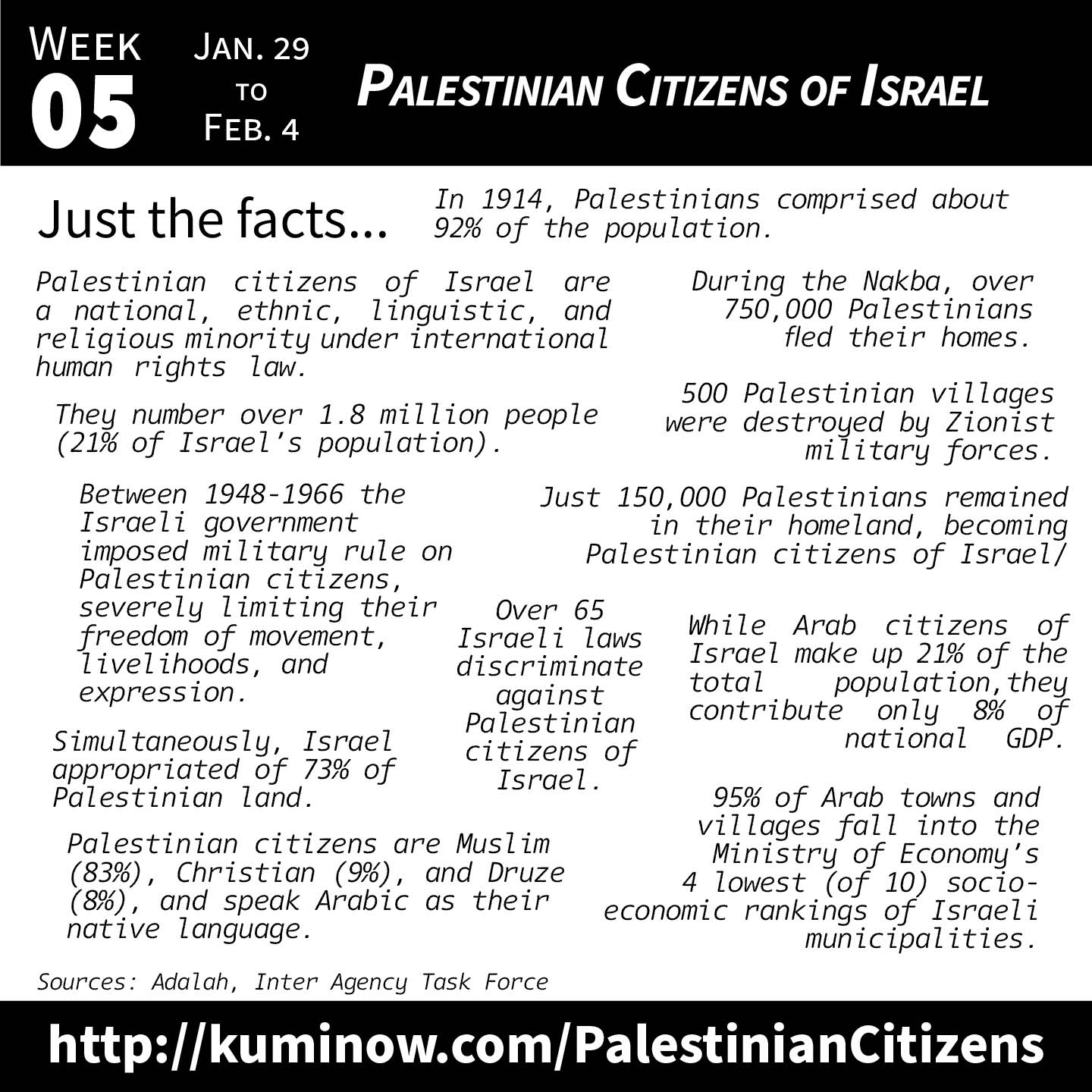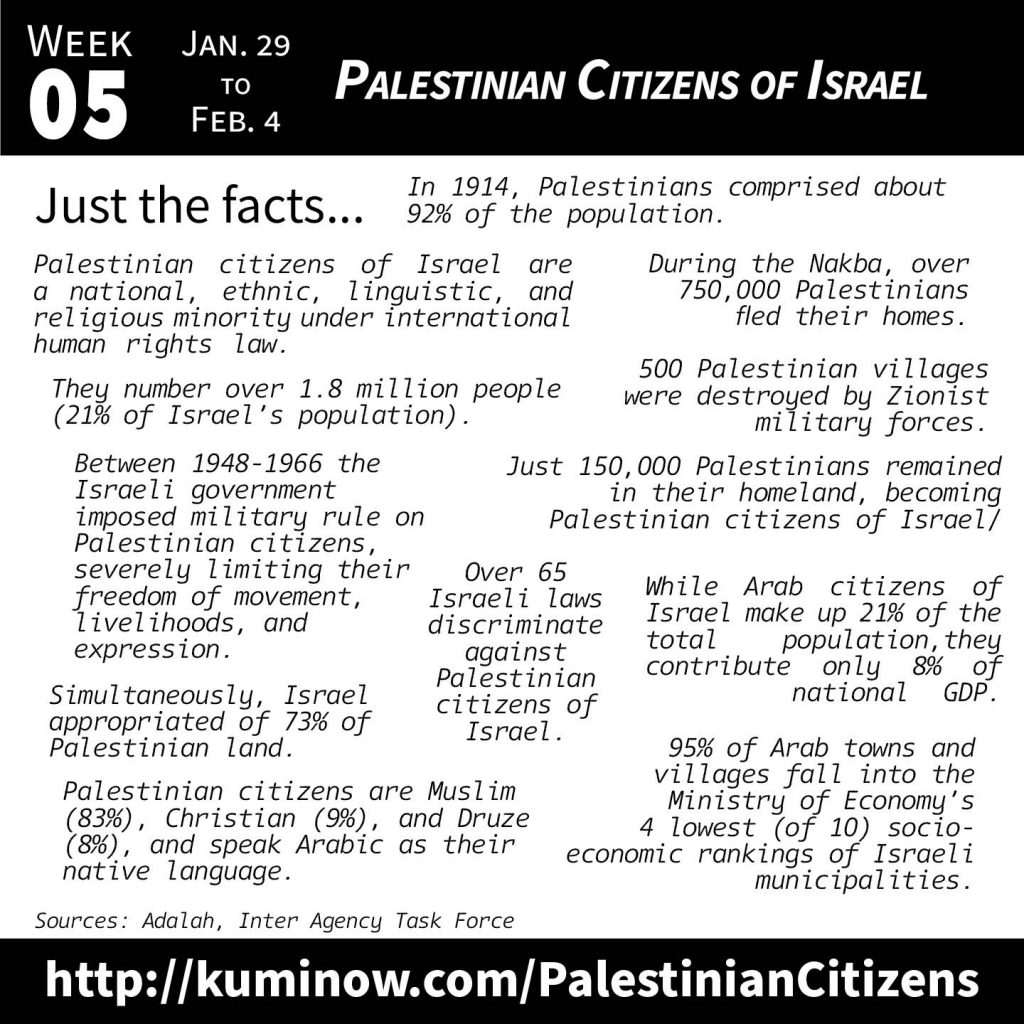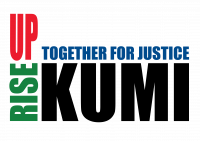Just the Facts: Palestinian Citizens of Israel


- In 1914, Palestinians comprised about 92% of the population.
- During the Nakba (“Catastrophe”), over 750,000 Palestinians fled or were forced to flee from their homes and 500 Palestinian villages were destroyed by Zionist military forces.
- Just 150,000 Palestinians remained in their homeland, becoming Palestinian citizens of Israel (PCI) and an involuntary minority.
- Between 1948-1966 the Israeli government imposed military rule on Palestinian citizens, severely limiting their freedom of movement, livelihoods, and expression.
- Simultaneously, Israel appropriated of 73% of Palestinian land.
- Palestinian citizens are Muslim (83%), Christian (9%), and Druze (8%), and speak Arabic as their native language.
- Palestinian citizens a national, ethnic, linguistic, and religious minority under international human rights law.
- They number over 1.8 million people (21% of Israel’s population).
- They eside primarily in the Galilee in the north; the “Little Triangle” in the center; and in the Naqab.
- While Arab citizens of Israel make up 21% of the total population, the Israeli government estimates that they contribute only 8% of national GDP.
- The government estimates that the Israeli economy loses NIS 31 billion every year as a result of under-utilizing the full workforce potential of Arab women and men.
- The vast majority (95%) of Arab towns and villages fall into the Ministry of Economy’s four lowest socio-economic rankings of Israeli municipalities (on a scale of 1-10).
- Jews and Arabs largely live in separate municipalities, with 70% of the Arab population living in Arab cities, towns and villages, 29% living in “mixed cities”5 and Jerusalem, and 1% living in Jewish localities.
- 78% of Arab youngsters reached the 12th grade (up from 76% in 2012), compared with 94% of their Jewish (non-Haredi) peers.
- Adalah maintains a database of over 65 laws that discriminate against Palestinian citizens of Israel.
This week’s Just the Facts comes from:
- “Palestinian Citizens of Israel: A Primer” from Adalah
- “FACT SHEET: Arab Citizens of Israel” from Inter Agency Task Force
Learning More
- Middle East Monitor has a great short video that sums up the situation, “Explained: Palestinian citizens of Israel”.
- You can consult Adalah’s “Discriminatory Laws Database”.
- You can find our list of additional resources on the topic.
- Finally, you can browse our YouTube playlist about Palestinian Israelis.
